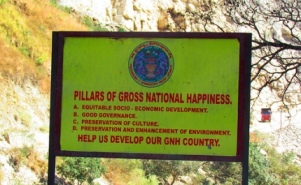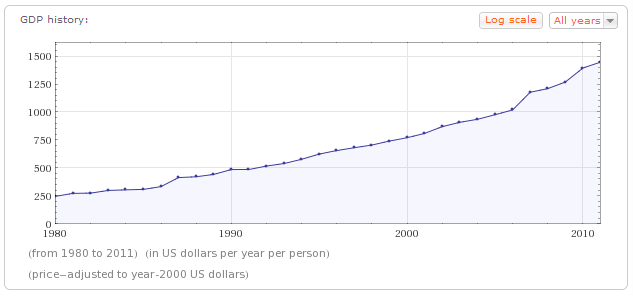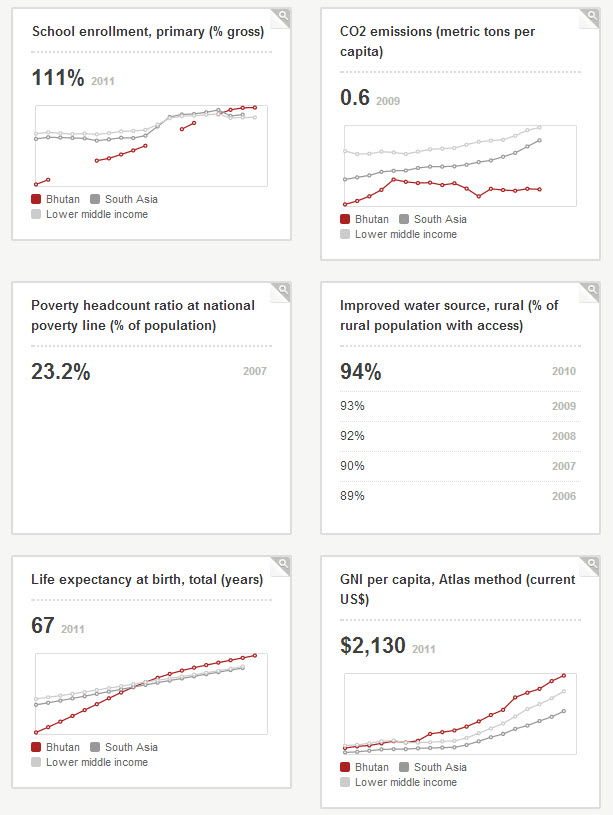“I am not so much interested in gross national product. I am more interested in gross national happiness.” – Jigme Singye Wangchuck, 4th King of Bhutan, 1972
In 1972, the fourth king of Bhutan said in a seemingly off-the-cuff comment to a journalist: “I am not so much interested in gross national product. I am more interested in gross national happiness.” That’s a great sound bite, but perhaps not that remarkable. How many times have you heard an organisational leader use a platitude such as “our people are our greatest asset” in an off-the-cuff comment? How many times did you expect them to back it up with action?
What makes this case remarkable is the transformation of Bhutan that took place as a result of this simple statement. Bhutan changed its primary measure of progress from “Gross Domestic Product” to “Gross National Happiness” and now assesses all draft legislation against 4 principles that will boost happiness for the Bhutanese people. This change didn’t happen because of a sound-bite in an interview, but because of concrete steps taken to align the reality with that vision – to measure and improve the “Gross National Happiness” of Bhutan’s people.
Here are 5 lessons that Bhutan’s Gross National Happiness initiative can teach us about strategy:
1. Define your own vision of success
Bhutan was prepared to redefine the definition of “progress”, where Gross Domestic Product (GDP) was (and still is) the de-facto measure of progress around the world. GDP is not without its criticisms – Economist Simon Kuznets himself, who developed the GDP measure in 1934 (and won the Nobel Prize for Economics in 1971) warned about the limits of its’ use:
Economic welfare cannot be adequately measured unless the personal distribution of income is known. And no income measurement undertakes to estimate the reverse side of income, that is, the intensity and unpleasantness of effort going into the earning of income. The welfare of a nation can, therefore, scarcely be inferred from a measurement of national income as defined.
Bhutan decided that taking a more holistic view of progress, which did include economic indicators but also health outcomes and cultural and environmental sustainability, would be a better measure of progress. So many times we execute a strategy or define success by what everyone else is doing, not by what we truly believe in.
2. Understand The Current State
When planning for the future, we need to understand the present, as well as the internal and external trends occurring. In order to define and measure happiness, Bhutan developed the Gross National Happiness Survey. The survey had more than 1500 variables and took between 4 and 7 hours to complete via interview (source). The questions ranged from demographic questions, to questions about how often the respondent had feelings of jealousy, disappointment, generosity, guilt and selfishness; to what their main sources of stress were (e.g. work, financial pressures, illness in family); to questions about time use.
3. Identify areas for improvement to support your vision
Results from the survey showed not only the aggregate happiness on a range of measures, but the difference between those measures for different demographics. The rural western Haa district recorded the highest levels of happiness, while people in the capital, Thimphu, scored significantly lower. In the capital, the lower score was in part attributed to people reporting that they often neither knew nor trusted their neighbors, and had less time for their families or for themselves.
Out of 150 measures, to be able to identify that addressing just two measures has the biggest potential to increase the happiness of people in Thimpu is valuable information. Segmentation and Data Analytics can help you uncover the “hot spots” and risk areas that allow you to make small changes with a large impact on results.

Four Pillars of Bhutan’s Gross National Happiness
(image source: http://www.thethirdpole.net/dam-building-spoils-bhutans-green-image-2/)
4. Allow your vision to drive your decision making
Bhutan’s Four Pillars of Gross National Happiness are:
- Equitable Socio-Economic Development;
- Good governance;
- Preservation of Culture; and
- Preservation and Enhancement of Environment.
Every policy that is passed by the government is assessed by these Four Pillars to support the goal of increasing Gross National Happiness. Bhutan recently announced its aim to become the world’s first 100% organic nation, in keeping with these goals.
5. Work towards your own definition of success, and you may well progress on everyone else’s definitions too
It’s interesting that despite consciously focusing on the GNH measure, Bhutan is making significant progress on other measures of wellbeing, including GDP. Bhutan is ranked 66th in the world in terms of real GDP growth, according to the World Bank‘s World Development Indicators. Growth in life expectancy, School Enrolment, and GNI per capita are all outpacing the South Asia region; and primary school enrolment is at 111% (more people are enrolled at primary school than are at primary school enrolment age).
Related articles
- Finding Happiness (Bhutan Chronicles)
- Bhutan´s intimacy with nature and all things happy (feelingnomad.com)
- Gross National Happiness (momentmatters.com)
- Gross National Happiness: A Look at Bhutan (goldenageofgaia.com)



